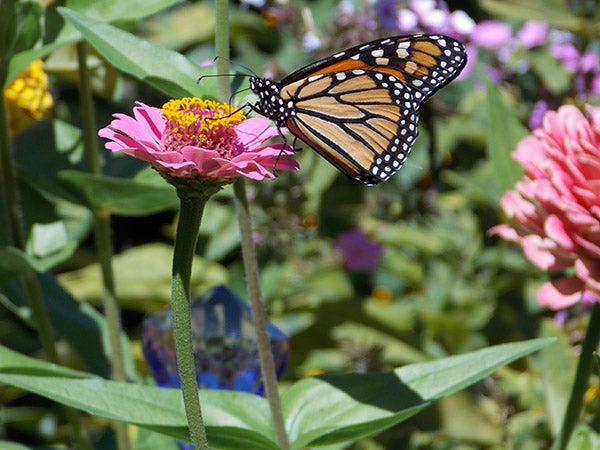It’s time for us to save the monarchs
Published 9:00 am Sunday, February 21, 2016
Serendipity Gardens by Carol Hegel Lang
It’s time to stop thinking about it and take a stand to save the monarchs we have in our area. One morning while I was perusing one of my gardening magazines, I read yet another article about the plight of our monarchs. That’s when I decided it was time for this passionate gardener to take a stand and help save the monarch butterflies, so I am forming a group that I have named “Save the monarchs of Freeborn County.” I hope you will join me in my effort.
The organizational meeting will be at 6:30 p.m. Tuesday at my home, 806 Lincoln Ave. in Albert Lea. For more information, please call me at 507-373-4981. My hope is that we can form a group to educate the public on the decline the monarchs and other pollinators are seeing and to dispense seeds to those interested in planting milkweed, the host plant for the monarch.
Nearly every gardening magazine I read has articles on the decline of not only the monarch population, but all of our pollinators. The ditches along our roads are sprayed with chemicals that kill the milkweed plants that used to thrive in them. It is estimated that milkweed has declined as much as 80 percent because of weed spraying the ditches for noxious weeds. Many farms are also planted all the way to the road, eliminating habitat for birds, bees and butterflies. Yet another problem is illegal logging of Oyamel fir trees in Mexico, the winter shelter for monarch butterflies.
Monarch butterflies need milkweed to lay their eggs on, where a caterpillar will emerge. In the beginning they are too tiny to see, but by eating the milkweed leaves the larva will grow to full size in just 10 to 14 days. As the monarch caterpillar nears adulthood, it will stop eating and find a safe place to pupate that is protected from rain, wind and predators. It will stay in the chrysalis for one to two weeks. The chrysalis will darken eventually, becoming transparent, and soon a butterfly will emerge. The milkweed plants are the only source of food for a caterpillar, making it critical that we continue to plant and grow milkweed.
Did you know that approximately one out of three bites of food we eat is pollinated by bees and butterflies? Insect pollination is critical to food security and is threatening our global food supply. You might ask yourself how you can help with your small garden or containers of plants you have on your patio. The solution is so simple and easy. First of all, plant milkweed or butterfly weed in your gardens. If all you have is a patio, then plant flowers that provide nectar for bees and butterflies. One of the prettiest and easiest to grow would be colorful zinnias that butterflies flock to.
Plant your colorful flowers in sweeps so the butterflies can fly from one group to another in close proximity. Another flower that really attracts the monarchs is tithonia, a Mexican sunflower, with bright orange flowers about the size of a medium zinnia bloom.
In our area, three easy milkweeds to grow are swamp milkweed, common milkweed and butterfly weed. In smaller gardens butterfly weed is probably the best to grow, as it doesn’t get quite so tall and the lovely bright orange blooms look lovely with other flowers. You can order seeds for swamp milkweed from the group Save Our Monarchs (www.saveourmonarchs.org). Butterfly weed plants are available at many local garden centers.
My hope is that we can educate the schools in our area and perhaps they will plant small butterfly gardens for the kids to learn about pollinators. I also would like to get service organizations, the city and county governments and 4-H and FFA groups interested in helping us out on this project. If you know of any group that would be interested, please have them contact me and we will try to help them get some of the seeds to plant. It is time we all get involved instead of just sitting back and letting someone else do it. If you plant one packet of seeds it will re-seed itself and you will continue to have milkweed growing in your garden, ditches and parks for years to come. We also need to quit spraying chemicals that kill our pollinators, so take a stand along with me and let’s get Freeborn County known as the pollinator friendly county.
“When we try to pick out anything by itself, we find it hitched to everything else in the universe.” — John Muir
Carol Hegel Lang is a green thumb residing in Albert Lea. Her column appears weekly. Email her at carolhegellang@gmail.com.





